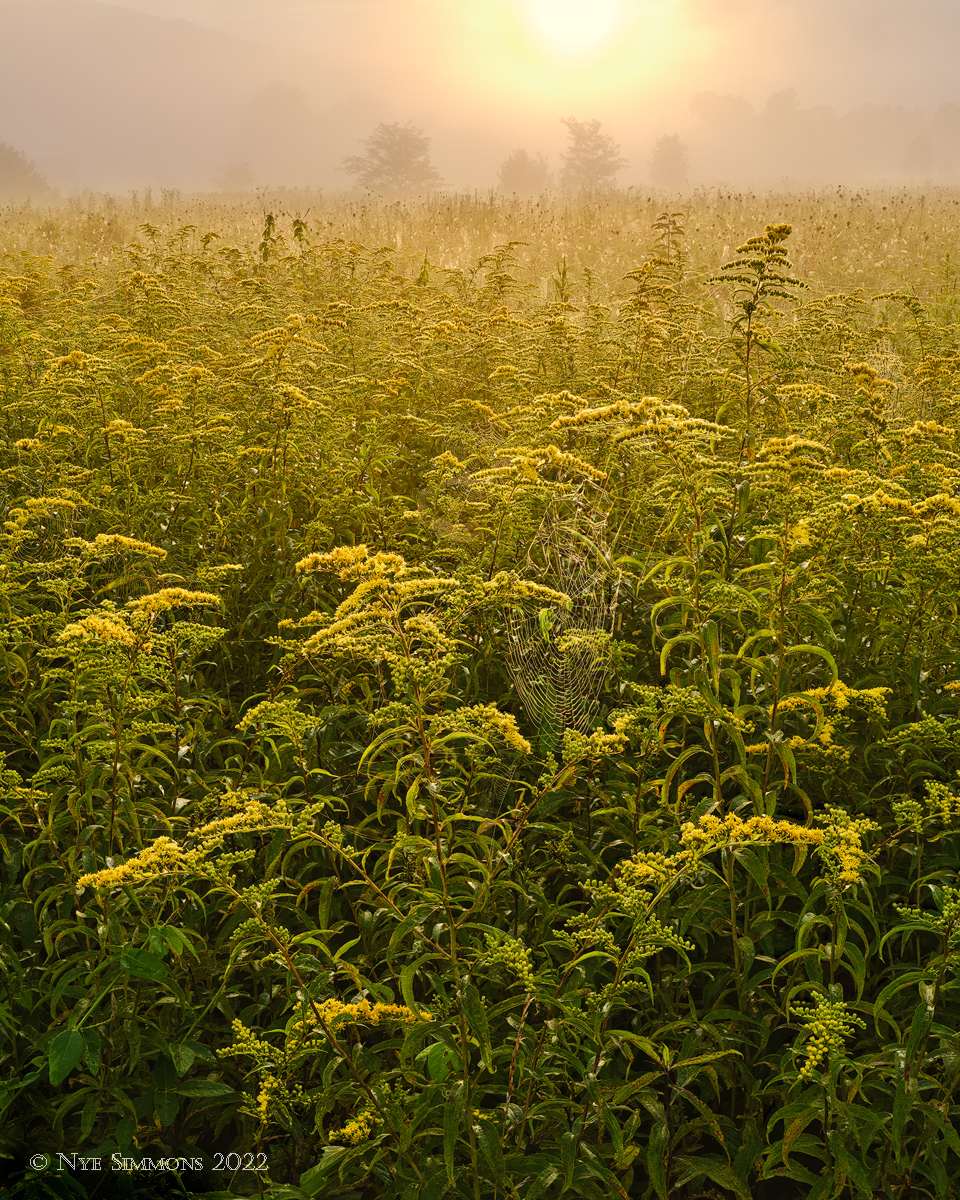


From about mid-August to the first Smokies frost, bright yellow clusters of goldenrods add intense patches of color to a mostly green landscape.
A quick Wikipedia search turns up interesting facts about the flower, including that it is the state flower of Kentucky, Nebraska, and South Carolina—and previously Alabama before being replaced by the camelia. Goldenrod has been used by Native Americans as an herbal remedy for a variety of ailments, and its extracts are commonly used in Europe. Goldenrods are in the genus Solidago from the Latin solido, meaning “to heal or to cure.” They also contain natural rubber and were used to make the tires of the first Model T. However, they failed to be commercially viable, given that there are better grades of rubber available. And, here, you might have thought that goldenrod was just a pretty flower! Who knew?
The best goldenrod displays I have found in the park are in Cades Cove, particularly along Sparks Lane. They make excellent subject matter for a photograph, whether as a foreground or an accent. How to approach them is a matter of choice.
Confused by all the photo-geek stuff? Here’s a quick and dirty diagram to explain depth of field if you are not familiar. As focal length increases, depth of field decreases, so a wide-angle lens, besides taking in a wider view, is more likely to render everything in sharp focus. As aperture (the iris mechanism in the lens that controls light entry) gets smaller, depth of field also increases. Larger numbers like f/16 have a smaller opening but more depth of field than smaller numbers like f/4, which have a larger opening but less depth of field.

So, in this setup, using a wide-angle lens would likely keep everything sharp, and a longer lens would require stacking.

But wait! Have a headache? Too much geek-speak? There is a solution to all this mess—your phone! Your phone has a tiny lens with an incredibly short focal length on the wide end. Its auto-focus is excellent, as is its auto-exposure.
You don’t have to be a professional photographer to make great images. Its easy to get caught up in the geek-speak of photography, but it’s more important to just be there and enjoy the moment. There is nothing quite like a misty morning in Cades Cove, and the goldenrod will be there waiting for you until first frost. There is plenty of time left to the season. Enjoy.
Nye Simmons is a writer and photographer who has been photographing the Smokies since the 1970s. He is the author of the Greater Smoky Mountains Photographer’s Guide and Tennessee Wonder and Light. He is also a collaborating photographer on Great Smoky Mountains Wonder and Light, as well as several books about the Blue Ridge Parkway. He currently offers photography workshops in the Smokies and beyond. Find him on the web at nyesimmons.com.
Subscribe to get the latest posts sent to your email.
The Great Smokies Welcome Center is located on U.S. 321 in Townsend, TN, 2 miles from the west entrance to Great Smoky Mountains National Park. Visitors can get information about things to see and do in and around the national park and shop from a wide selection of books, gifts, and other Smokies merchandise. Daily, weekly, and annual parking tags for the national park are also available.